How Home Organization Reduces Stress and Anxiety
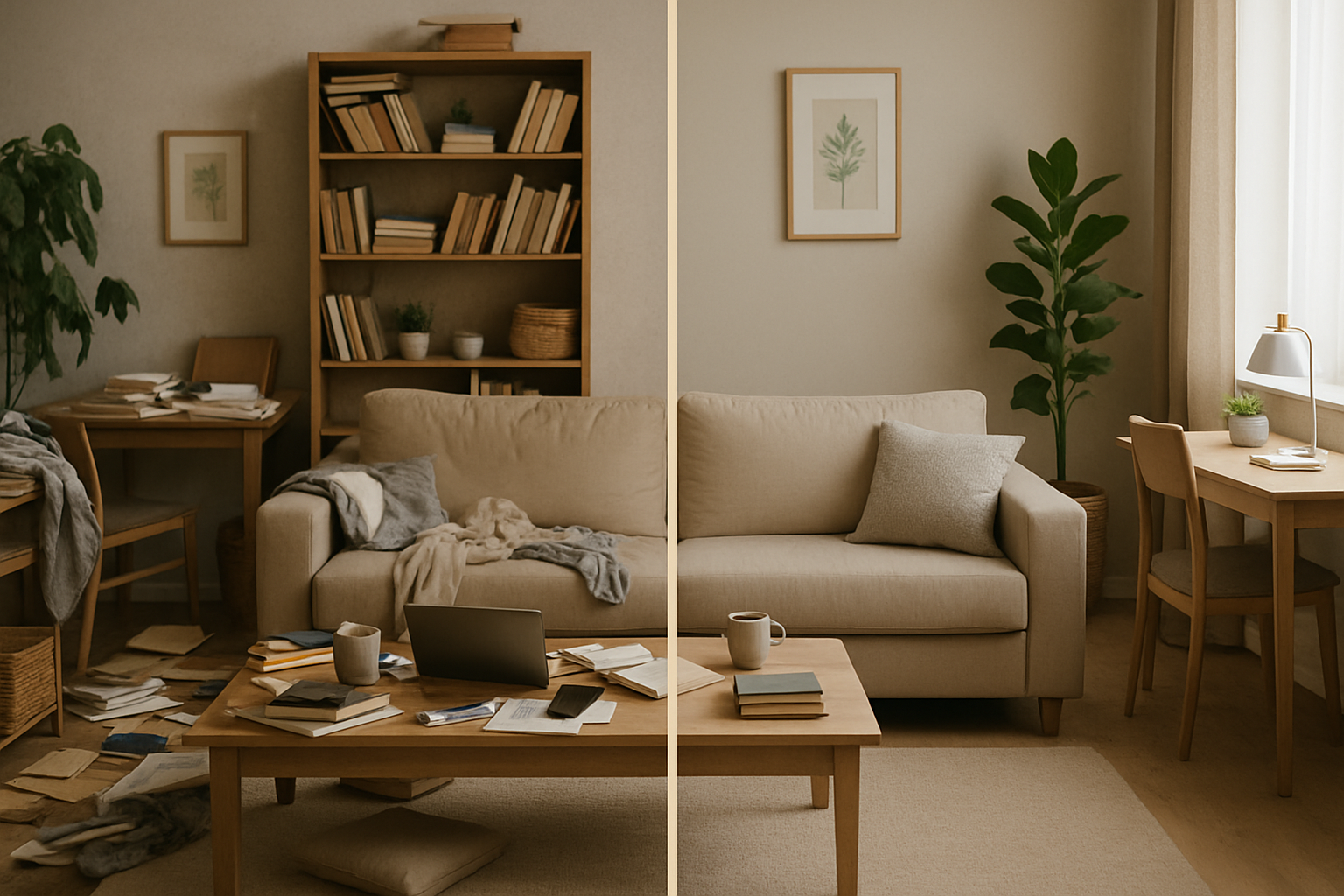
In our exploration of how our living spaces affect our health, one element consistently emerges as a powerful influence on psychological wellbeing: home organization. While our comprehensive guide examined the broad relationship between home design and health, this focused article delves into the specific connections between organization and mental wellness. The state of our physical surroundings has a direct, measurable impact on our stress levels, anxiety, cognitive function, and overall psychological health.
The relationship between clutter and mental distress isn’t merely subjective or aesthetic—it’s neurobiological. Research has established clear links between disorganized environments and elevated stress hormones, reduced cognitive capacity, and increased mental fatigue. Conversely, organized spaces have been shown to lower cortisol levels, improve executive function, and enhance our sense of control and capability. As our homes increasingly serve multiple functions—workplaces, fitness centers, schools, and retreats—the psychological impact of their organization becomes even more significant.
This science-backed exploration will reveal how thoughtful home organization can serve as a practical, accessible intervention for reducing stress and anxiety, while providing clear strategies for creating spaces that genuinely support your mental wellbeing.
What You’ll Discover About Organization and Mental Wellness
For a comprehensive overview of how home design affects overall health, check out our complete guide to home design and wellbeing.
In this focused exploration of home organization and mental wellness, we’ll cover:
🧠 The neuroscience of organization and how clutter directly affects brain function and stress responses
✨ Evidence-based organization principles that promote psychological wellbeing, not just aesthetic appeal
🏡 Room-specific strategies for creating order that reduces mental load and supports daily function
⚡ High-impact starting points that provide immediate stress relief even with limited time
🌱 Sustainable organization systems that adapt to your needs and prevent clutter from returning
This article provides practical, research-backed approaches to organization that focus specifically on reducing stress and anxiety, rather than just creating picture-perfect spaces. You’ll learn how to create environments that genuinely support your mental health through thoughtful organization.
Research demonstrates direct connections between home organization and reduced stress hormones, improved cognitive function, and enhanced psychological wellbeing.
The Neuroscience of Clutter: How Disorganization Affects Your Brain
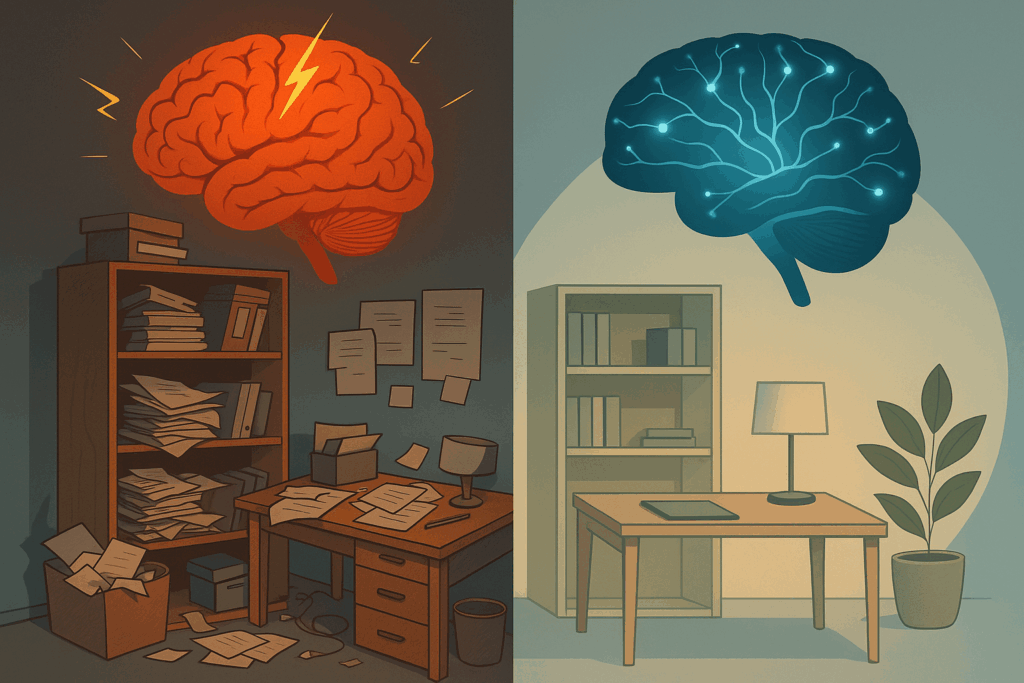
The impact of clutter on our mental state isn’t simply a matter of preference—it’s a neurological reality with measurable biological effects. Understanding these mechanisms explains why organization is so crucial for mental wellness.
Cognitive Load and Attention
A landmark study from Princeton University’s Neuroscience Institute revealed that physical clutter in our environment competes for our attention, resulting in decreased performance and increased stress. Using functional MRI scans, researchers observed that when multiple visual stimuli appear within participants’ visual field, they compete for neural representation.
“When your environment is cluttered, the chaos restricts your ability to focus,” explains Dr. Eva Selhub, Harvard physician and wellness expert. “The visual distraction of clutter increases cognitive load and impairs working memory, making it harder to process information and regulate emotions.”
This cognitive burden manifests in several ways:
- Reduced working memory capacity: Visible clutter occupies mental resources, leaving less cognitive bandwidth for tasks requiring focus
- Increased distractibility: Disorganized environments provide constant visual cues pulling attention away from primary tasks
- Decision fatigue: Navigating cluttered spaces requires numerous micro-decisions, depleting mental energy
- Impaired goal pursuit: Visual disorder makes it harder to maintain focus on long-term objectives
A University of California study found that people working in visibly cluttered environments made 44% more errors on tasks requiring sustained attention compared to those in organized spaces.
Physiological Stress Responses
Disorganization triggers measurable physiological stress responses that can damage health over time:
- Elevated cortisol: A study in Personality and Social Psychology Bulletin found women who described their homes as “cluttered” had higher cortisol levels throughout the day than those who described their homes as “restful” or “restorative”
- Increased heart rate and blood pressure: Exposure to visual clutter has been shown to raise heart rate by an average of 3-7 beats per minute and elevate blood pressure readings
- Sleep disruption: Bedroom clutter correlates with sleep disturbances, including difficulty falling asleep and reduced sleep quality
- Compromised immune function: Chronic low-level stress from environmental disorder can suppress immune responses
“The chronic low-grade stress of living in a cluttered environment puts your body in a persistent state of alert, elevating stress hormones that should only be activated during actual threats,” notes Dr. Joseph Ferrari, professor of psychology at DePaul University and clutter researcher.
Control and Agency
Perhaps most significantly, disorganization affects our sense of control—a core psychological need:
- Learned helplessness: Persistent disorder can create a sense that our environment is beyond our influence
- Reduced self-efficacy: The inability to maintain organization can undermine belief in our capabilities
- Environmental mastery: Organization enhances our sense of competence and mastery in our surroundings
Research from the University of New Mexico found that people who felt in control of their home environments reported 77% lower levels of persistent anxiety than those who felt their spaces were beyond their control.
This research explains why organization isn’t merely about aesthetics—it’s about creating environments that support rather than undermine our neurological functioning and psychological wellbeing.
Neuroimaging studies reveal how visual clutter increases cognitive load, activates stress responses, and impairs executive function in measurable ways.
Evidence-Based Organization: Beyond Aesthetics to Wellbeing
Effective organization for mental wellness extends far beyond visual appeal. Research has identified specific organization approaches that psychologically benefit occupants rather than simply creating picture-perfect spaces.
Functional vs. Visual Organization
While social media showcases visually stunning organization systems, research indicates that functionality matters more for psychological wellbeing:
| Visual Organization | Functional Organization |
|---|---|
| Focuses on how spaces look | Focuses on how spaces work |
| Often requires perfect maintenance | Accommodates natural use patterns |
| Creates aesthetic consistency | Creates intuitive systems |
| May prioritize appearance over use | Prioritizes reduced cognitive load |
According to environmental psychologist Dr. Sally Augustin, “The most effective organization systems match your cognitive style and behavioral patterns. A visually perfect system that works against your natural tendencies creates more stress than it alleviates.”
Research from Cornell University found that organization systems aligned with users’ natural behavior patterns were maintained 3.4 times longer than aesthetic systems that ignored behavioral realities.
Psychological Ownership and Meaningful Possession
How we relate to our belongings significantly impacts the effectiveness of organization:
- Intentional curation: Keeping items that support values and goals rather than arbitrary standards of minimalism or abundance
- Meaningful categorization: Organizing according to personal meaning and utility rather than conventional categories
- Psychological completion: Creating appropriate closure for items no longer needed through conscious disposition
“It’s not about having less—it’s about supporting what matters,” explains psychologist Dr. Christine Koh. “Organization becomes sustainable when it reflects your authentic needs rather than external standards.”
Pro Tip: When organizing, create three categories instead of the standard “keep, donate, discard.” Add a “transition” category for items you’re not ready to release but don’t actively use. Store these items out of your daily spaces but accessibly. Set a calendar reminder to revisit in 3-6 months. This honors the psychological attachment while preventing clutter from occupying prime real estate in your home.
Appropriate Visual Complexity
Research from the University of Minnesota reveals that neither stark minimalism nor excessive complexity optimally supports wellbeing. Instead, moderate visual complexity—organized variety—creates the most psychologically supportive environments.
For mental wellness, the ideal environment includes:
- Organized complexity: Some visual variety within an orderly framework
- Meaningful focal points: Intentional visual anchors that guide attention positively
- Rest spaces: Areas with lower visual stimulation that allow cognitive recovery
- Coherent systems: Organization that creates visual patterns the brain can easily process
“Our brains are pattern-recognition machines,” explains neuroscientist Dr. Tara Swart. “Environments with recognizable patterns and appropriate complexity support cognitive ease, while both chaotic and barren spaces increase cognitive strain.”
As noted in our article on 5 Design Elements That Improve Everyday Wellbeing, finding the right balance of stimulation in your environment is essential for psychological comfort.
Evidence-based organization approaches focus on functionality, meaningful design, and appropriate visual complexity rather than just aesthetic appeal.
Room-Specific Organization for Stress Reduction
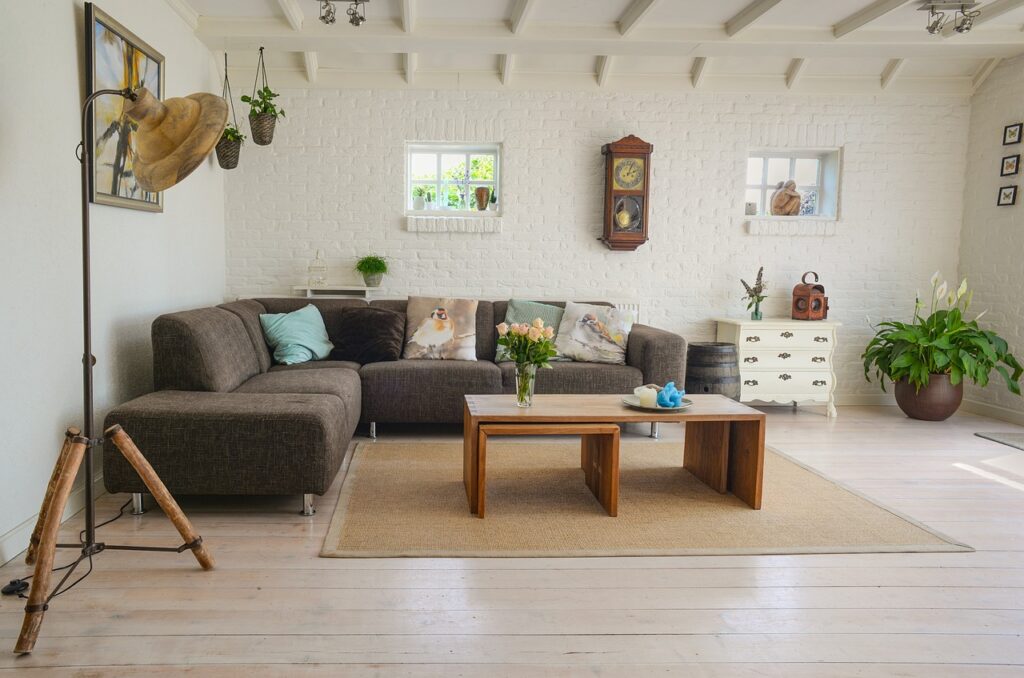
Different areas of your home serve distinct functions and present unique organization challenges. Research shows that targeting high-impact areas with function-specific strategies yields the greatest stress-reduction benefits.
Entryway Organization: Creating Transition Control
The entryway sets the psychological tone for your home experience and manages the boundary between outside stressors and your sanctuary:
- Arrival system: Create a consistent place for keys, mail, bags, and outerwear to prevent transition stress and morning searches
- Buffer zone: Designate a specific area where outside items stay, preventing work/life boundaries from blurring
- Decision reduction: Implement simple systems requiring minimal decisions upon arrival when decision fatigue is highest
- Visual clearing: Keep entryway surfaces 80% clear to create a sense of arrival into a controlled environment
A study from the Center for Built Environment Research found that people with organized entryways reported 34% lower subjective stress levels upon arriving home compared to those with disorganized entry areas.
Implementation strategies include:
- Wall-mounted storage keeping items visible but orderly
- Dedicated containers for each family member
- “One-touch” systems where items go directly to their final destination
- Immediate processing station for mail and papers
Kitchen Organization: Supporting Nourishment and Routine
Kitchen disorganization significantly impacts stress levels through both visual chaos and functional impairment:
- Zone creation: Organize according to workflow (preparation, cooking, serving, cleaning) rather than conventional categories
- Decision reduction: Arrange frequently used items at eye level and within easy reach to minimize decision fatigue
- Visual calm: Keep countertops 70-80% clear to reduce visual processing load during meal preparation
- Friction reduction: Remove obstacles between intention and healthy behaviors (e.g., visible, accessible healthy options)
Research from Cornell University’s Food and Brand Lab found that organized kitchens correlate with 44% lower snacking on convenience foods and significantly reduced meal preparation stress.
“The kitchen often serves as the home’s command center,” notes professional organizer Peter Walsh. “Its organization impacts not just meals but overall family functioning and health behaviors.”
Bedroom Organization: Supporting Restorative Sleep
Sleep environments particularly benefit from organization that supports both physical and psychological rest:
- Sleep-supporting clearance: Keep the area visible from the bed clear of stressors and reminders of incomplete tasks
- Under-bed clearing: Remove storage from under the bed to improve perceived safety and air circulation
- Closed storage: Use closets and drawers rather than open storage to reduce visual stimulation
- Bedside essentials: Organize only sleep-supporting items within reach of the bed
“Bedroom clutter has been specifically linked to sleep disruption and increased anxiety,” explains sleep researcher Dr. Pamela Thacher. Her research found that people who sleep in cluttered bedrooms take an average of 11 minutes longer to fall asleep and experience more sleep disruptions throughout the night.
Targeted organization strategies for different rooms address the specific psychological needs and functions of each space for maximum stress reduction.
Digital Organization: The Overlooked Stress Factor
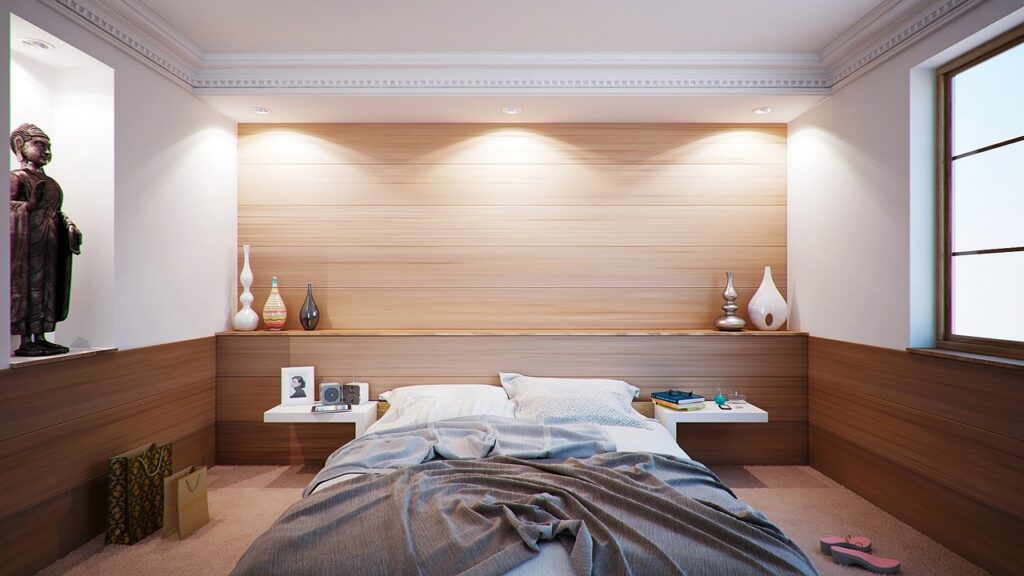
While physical clutter has been extensively studied, digital disorganization represents an increasingly significant source of anxiety and cognitive load. Research shows our digital environments affect mental wellness as profoundly as physical spaces.
Digital Clutter and Cognitive Overload
The psychological impact of digital disorder includes:
- Attention fragmentation: Cluttered screens, excessive notifications, and disorganized files split attention and reduce focus
- Information anxiety: The inability to find digital information creates acute stress responses similar to physical searching
- Decision fatigue: Navigating disorganized digital environments requires constant micro-decisions that deplete mental energy
- Boundary erosion: Disorganized digital spaces blur work/life boundaries and extend stress across contexts
A study from the University of California found that workers with organized digital environments spent 62% less time searching for information and reported 45% lower frustration levels compared to those with disorganized digital spaces.
Evidence-Based Digital Organization
Implement these research-backed strategies for digital stress reduction:
- Consistent naming systems: Create standardized file naming conventions that make logical retrieval intuitive
- Digital minimalism: Regular purging of unused applications, files, and digital subscriptions to reduce maintenance load
- Notification boundaries: Categorical limits on alerts, with only essential real-time notifications enabled
- Email structure: Implement the “touch once” principle for email management, with immediate categorization for action, reference, or deletion
- Digital zoning: Create separate user accounts or spaces for different activities (work, personal, creative) to maintain boundaries
Important: Schedule regular “digital decluttering” sessions just as you would physical organizing. Set calendar reminders for weekly (15-minute), monthly (30-minute), and quarterly (2-hour) digital organization maintenance. These scheduled sessions prevent digital environments from reaching overwhelming states that trigger avoidance behaviors.
Physical-Digital Integration
The most effective organization systems recognize the relationship between physical and digital environments:
- Consistent cross-platform systems: Use parallel organizational structures in physical and digital spaces
- Physical anchors for digital information: Create tangible reminders or access points for important digital content
- Digital support for physical spaces: Use apps and systems that simplify physical organization rather than complicate it
“The boundary between our digital and physical environments is increasingly porous,” explains Dr. Gloria Mark, researcher on digital stress. “Organization systems that acknowledge this integration promote greater cognitive ease and reduce stress across both domains.”
For those working from home, this integration is particularly important. Our article on Home Office Design for Productivity and Wellbeing offers additional strategies for creating organized, stress-reducing work environments.
Digital organization strategies reduce cognitive load and stress by creating structured information environments and establishing healthy technology boundaries.
The Psychology of Letting Go: Addressing Emotional Clutter
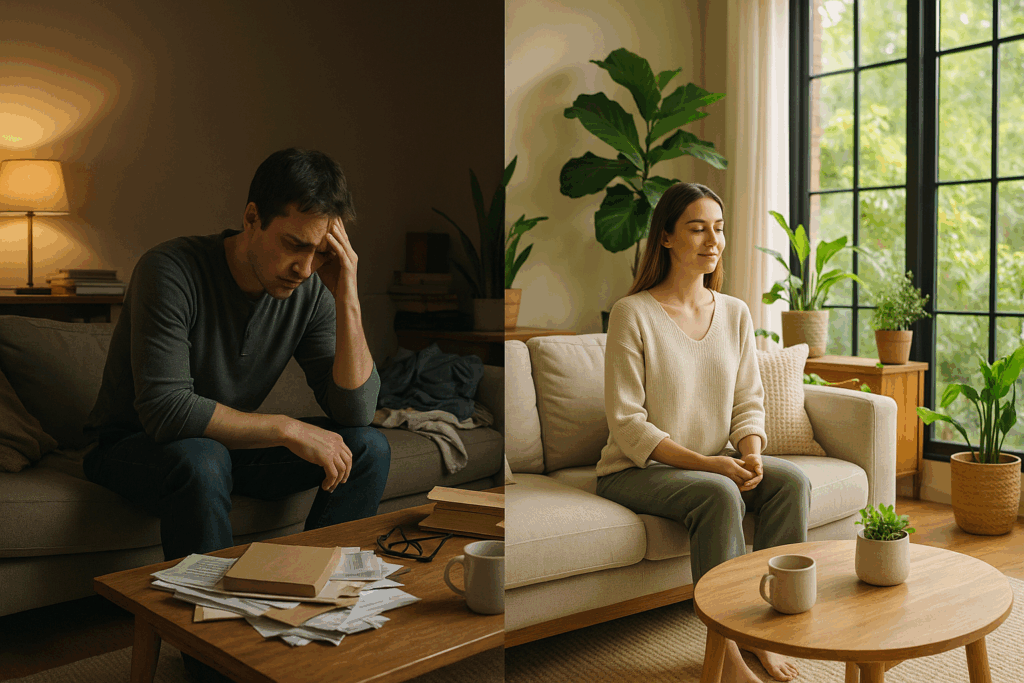
Physical organization often stalls because of psychological attachments to possessions. Understanding the emotional dimensions of clutter is essential for creating lasting organization that supports mental wellness.
The Science of Attachment to Possessions
Research in consumer psychology reveals several mechanisms that create emotional attachments to objects:
- Extended self: Items become incorporated into our sense of identity and self-concept
- Memory anchoring: Objects serve as external storage for memories and emotional experiences
- Future-self projection: Unused items represent aspirational identities or potential future scenarios
- Security signaling: Abundance of possessions can represent psychological security in uncertain times
- Sunk cost fallacy: The inability to release items we’ve invested in, regardless of current utility
A groundbreaking study from Yale University used neuroimaging to observe that for people with difficulty discarding items, attempting to discard personally meaningful objects activated the same brain regions involved in physical pain processing.
Compassionate Release Strategies
Evidence-based approaches to address emotional attachments include:
- Memory preservation: Photographing sentimental items before release to maintain the emotional connection while releasing the physical object
- Narrative completion: Creating closure through acknowledgment of an item’s role before transitioning it out
- Gradual distancing: Moving items to transitional storage before final decisions to ease psychological separation
- Value transfer: Directing items to specific new owners or purposes that align with their perceived value
- Identity affirmation: Consciously separating self-worth and identity from possession accumulation
“The most effective decluttering approaches acknowledge emotional attachments rather than dismissing them,” explains psychologist Dr. April Lane Benson, who specializes in compulsive acquisition. “When we honor the meaning behind our attachments while still creating space for current priorities, we reduce the psychological resistance to organization.”
Cultural and Generational Factors
Attitudes toward possessions often have deep cultural and generational roots that must be recognized:
- Scarcity imprinting: Generations who experienced significant resource limitations often maintain abundance as security
- Cultural values: Some cultures emphasize preservation and heritage through objects more than others
- Family systems: Inherited approaches to possessions that may conflict with current wellbeing needs
- Environmental consciousness: Growing awareness of consumption impact creating new tensions around possession management
Researchers at the University of Michigan found that acknowledging these deeper influences rather than focusing solely on the physical aspects of organization leads to more sustainable changes and reduced anxiety during the organization process.
For those working through significant attachment challenges, compassionate professional support from organizers trained in the psychological dimensions of clutter may be beneficial.
Understanding the psychological attachments to possessions allows for compassionate organization approaches that address emotional needs while creating order.
Sustainable Organization: Systems That Prevent Clutter Return
Creating organized spaces offers immediate stress relief, but maintaining organization provides sustainable mental wellness benefits. Research shows that certain approaches create lasting order while others almost guarantee rebound clutter.
The Maintenance Fallacy
Traditional organization advice often fails because it relies on unrealistic maintenance expectations:
- Perfect maintenance myth: Systems requiring constant vigilance inevitably fail when energy or attention fluctuates
- Organizational perfectionism: Unrealistic standards that create an all-or-nothing approach
- Context blindness: Systems that ignore household composition, schedules, and natural behavior patterns
- Capacity overestimation: Creating more maintenance requirements than available time and energy can sustain
Research from the University of Minnesota found that organization systems requiring more than 10 minutes of daily maintenance have an 87% failure rate within three months, regardless of initial motivation.
Evidence-Based Sustainable Systems
Studies in behavioral psychology and environmental design reveal approaches that create lasting organization:
- Threshold-based systems: Organization that accommodates natural accumulation followed by scheduled reset points
- Closed-loop processes: Complete pathways for items entering and exiting the home
- Decision minimization: Systems requiring fewer conscious choices for maintenance
- Visual triggers: Environmental cues that prompt organizational behaviors
- Buffer zones: Designated areas that absorb temporary disorder without contaminating primary spaces
“Sustainable organization works with human nature rather than against it,” explains environmental psychologist Dr. Samuel Gosling. “It acknowledges that perfect consistency is unrealistic and builds in recovery mechanisms for natural fluctuations in motivation and energy.”
Implementing Sustainable Systems
Create organization that maintains itself with these specific strategies:
- One-in, one-out boundaries: Establish non-negotiable upper limits for categories with acquisition rules
- Container method: Use appropriately sized containers that physically limit accumulation
- Strategic incompleteness: Design systems that function at 80% capacity, leaving room for fluctuation
- Scheduled reset rituals: Establish regular 15-30 minute “reset” sessions rather than expecting continuous maintenance
- Friction alignment: Remove friction from organization tasks while adding slight friction to disorganization
Pro Tip: Create “catchment areas” in key locations—attractive containers with no specific category designation where items can temporarily land when you’re tired or rushed. Schedule weekly 10-minute sessions to process these containers when you have more mental bandwidth. This provides both flexibility and boundaries, acknowledging that perfect systems are unrealistic while preventing complete breakdown.
This approach aligns with insights from our main article on How Your Home Design Affects Your Physical and Mental Health, which emphasizes creating systems that work with your natural tendencies rather than against them.
Sustainable organization systems work with natural behavior patterns to create lasting order without requiring perfect maintenance or unrealistic vigilance.
Starting Points: High-Impact Organization for Immediate Relief
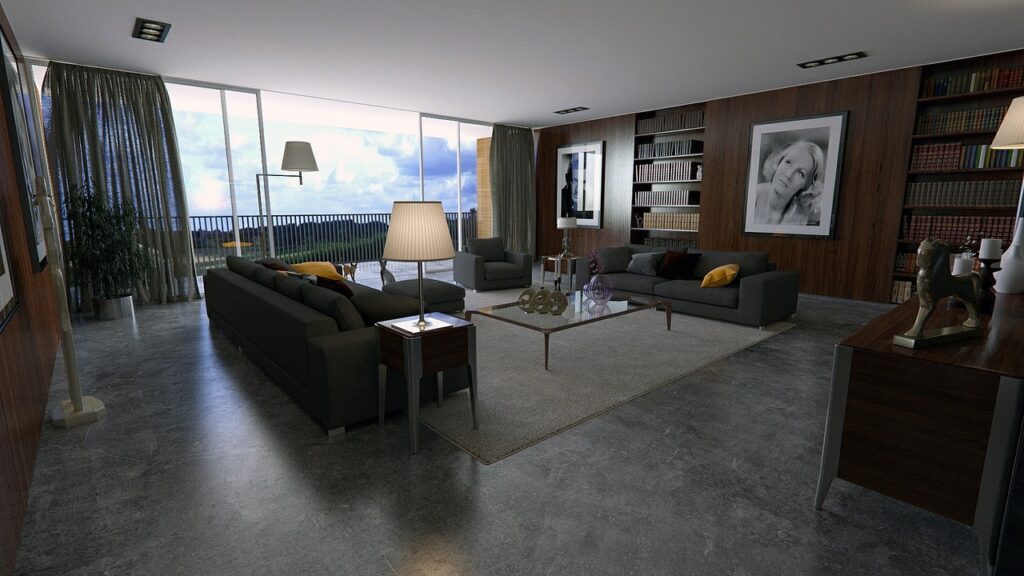
When feeling overwhelmed by disorganization, strategic starting points can provide immediate stress reduction and build momentum for broader changes. Research identifies specific projects with outsized psychological benefits.
Visual Priority Zones
Studies show that certain areas disproportionately impact perceived order and stress levels:
- Horizontal surfaces: Clearing tables, countertops, and visible flat surfaces creates immediate cognitive relief
- Transition zones: Organizing entryways and hallways reduces daily friction and transition stress
- Primary visual fields: Areas directly in your line of sight from common rest positions
- Morning pathway: The routes and elements encountered in your first hour awake
- Evening wind-down spaces: The areas you see in the last hour before sleep
Research from the University of Southern California found that clearing visual priority zones reduced perceived stress by 27% within 24 hours, even when other areas remained disorganized.
The 10-Minute Impact Projects
When time and energy are limited, these brief interventions offer maximum psychological return:
- Entryway reset: Creating a functional arrival system (10 minutes)
- Bathroom counter clearing: Removing non-essentials from daily grooming areas (10 minutes)
- Bedside arrangement: Organizing only what supports rest within arm’s reach (10 minutes)
- Refrigerator front clearing: Creating one clean visual field in the kitchen (5 minutes)
- Primary seat view: Arranging what you see from your most-used chair (10 minutes)
“Small, visible improvements create psychological momentum,” explains habit researcher BJ Fogg, PhD. “Brief organizing sessions that create noticeable results build self-efficacy and motivation for larger projects.”
When to Seek Support
Some organization challenges benefit from professional guidance:
- Chronic disorganization: When disorganization persists despite repeated efforts
- Post-transition overwhelm: After major life changes like moves, losses, or combining households
- Neurodivergent challenges: When ADHD, autism, or other neurological differences impact organizational abilities
- Emotional blocking: When strong feelings consistently prevent progress
Professional organizers, particularly those with additional training in chronic disorganization or mental health considerations, can provide customized strategies and emotional support.
“The relationship between organization and mental health is bidirectional,” notes psychologist and organizational consultant Dr. Regina Lark. “Sometimes improving organization enhances mental health, but sometimes addressing mental health challenges is necessary before organization can improve.”
For those who find that disorganization consistently impacts their mental wellbeing despite efforts to improve, consider exploring mental health resources in addition to organizational strategies.
Strategic starting points for organization provide immediate stress relief and build momentum for broader changes with minimal time investment.
Organization Across Life Stages and Situations
Organization needs and challenges evolve throughout life. Research provides insights for adapting organization strategies to different circumstances while maintaining psychological benefits.
Family Homes and Shared Spaces
Organizing with children and multiple household members requires special approaches:
- Developmental appropriateness: Systems matched to cognitive and physical capabilities at different ages
- Participatory systems: Organization structures created with input from all users
- Visual clarity: Clear, intuitive systems that don’t rely on reading or complex categorization
- Maintenance reality: Expectations and systems that acknowledge actual household patterns and capacities
- Responsibility zones: Clear ownership of spaces and tasks while maintaining common standards
Research from the University of California found that households with developmentally appropriate, visually-based organization systems reported 54% less organization-related conflict and higher overall satisfaction with home environments.
“The most successful family organization systems balance structure with flexibility,” explains family systems researcher Dr. Katherine Saltzberg. “They provide enough order to reduce stress but enough adaptability to accommodate different needs and developmental stages.”
Major Life Transitions
Certain life periods create unique organization challenges requiring specialized approaches:
| Life Transition | Organization Focus | Psychological Benefit |
|---|---|---|
| Moving homes | Sequential systems; essential access | Control amid change |
| New baby | Functional proximity; one-handed systems | Reduced decision load |
| Combining households | Intentional curation; compromise zones | Respect for identities |
| Empty nest | Purposeful repurposing; gradual transitions | Honoring life changes |
| Downsizing | Value-based decisions; digital alternatives | Maintaining autonomy |
| Bereavement | Gentle pacing; meaning preservation | Processing through organization |
“During major transitions, organization becomes not just functional but deeply symbolic,” notes Dr. Pauline Boss, researcher on ambiguous loss. “Thoughtful organization processes can support psychological adjustment to change when they honor both practical needs and emotional realities.”
Small Spaces and Limited Resources
Organization in constrained environments requires particular strategies:
- Vertical thinking: Utilizing wall and door space to expand storage capacity
- Multi-functionality: Selecting items and furniture that serve multiple purposes
- Regular curation: More frequent evaluation of necessities and priorities
- Digital alternatives: Replacing physical items with digital versions where appropriate
- Rotation systems: Seasonal storage and exchange to maintain essentials while limiting active inventory
Attention: In small spaces, the psychological impact of clutter intensifies. Research shows that disorganization in limited square footage creates significantly higher stress responses than the same level of disorganization in larger spaces. This makes regular maintenance particularly important for mental wellness in compact living situations.
For residents of small spaces like apartments or tiny homes, our article on 5 Design Elements That Improve Everyday Wellbeing offers complementary strategies for creating environments that feel spacious and supportive despite size limitations.
Adaptive organization strategies for different life stages and living situations maintain stress-reduction benefits across changing circumstances.
Conclusion: Creating Your Organization Plan for Mental Wellness
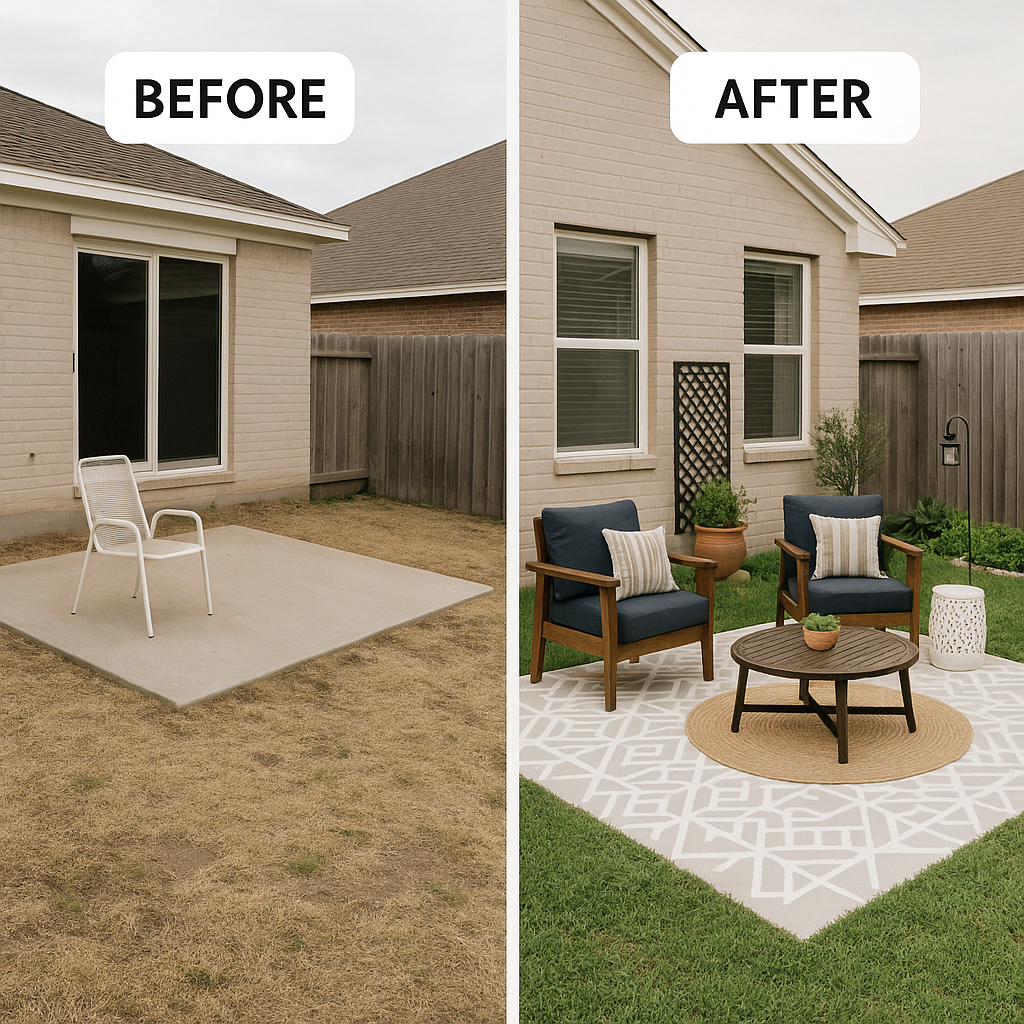
The research is clear: thoughtful home organization significantly reduces stress and anxiety while enhancing overall psychological wellbeing. Unlike many wellness interventions, organization provides both immediate relief and long-term benefits when implemented with an understanding of the psychological principles involved.
Your Personalized Approach
The most effective organization for mental wellness is personalized to your specific needs:
- Assess your stress points: Identify the disorganized areas that most impact your daily mental state
- Acknowledge your patterns: Recognize your natural tendencies and design systems that work with them
- Start with high-impact areas: Focus first on spaces visible during key transition moments
- Create sustainable systems: Implement organization that can be maintained with realistic effort
- Build in recovery mechanisms: Design approaches that accommodate fluctuations in energy and focus
“Organization is never one-size-fits-all,” emphasizes environmental psychologist Dr. Lily Bernheimer. “The most effective systems for mental wellness are those that reflect your unique cognitive style, daily patterns, and what genuinely matters in your life.”
Ongoing Benefits
As you implement these evidence-based approaches to organization, you can expect several mental wellness benefits:
- Reduced cortisol levels and associated stress symptoms
- Improved executive function and decision-making capacity
- Enhanced sense of control and self-efficacy
- Better sleep quality through bedroom organization
- Reduced family tension around shared spaces
- Lowered visual and cognitive load throughout your day
- Greater ease in daily transitions and routines
Remember that organization is not about perfection but about creating environments that genuinely support rather than undermine your psychological wellbeing. By focusing on the functional and emotional impacts of your spaces rather than comparing them to idealized images, you develop sustainable systems that truly enhance mental wellness.
For additional perspectives on creating mentally supportive home environments, explore our related articles on Biophilic Design: How Bringing Nature Indoors Boosts Health and Home Lighting and Mental Wellness: What Science Tells Us.
A personalized organization approach addresses your specific stress points, acknowledges natural patterns, and creates sustainable systems for long-term mental wellness.
Frequently Asked Questions
Common questions about home organization for stress and anxiety reduction, with evidence-based answers.
🧠 Is the stress from disorganization real or just a perception problem?
The stress response to disorganization is neurobiologically real, not simply a matter of perception. Research using cortisol sampling (measuring stress hormones in saliva) shows that people in cluttered environments experience 19-37% higher cortisol levels compared to those in organized spaces. Functional MRI studies demonstrate that visual clutter activates the amygdala and other regions associated with stress responses. These physiological effects occur even in people who claim they “don’t mind” or “don’t notice” the clutter, indicating that the impact operates partially at a subconscious level through visual processing pathways that affect stress regulation regardless of conscious attention.
🏠 I feel overwhelmed by the thought of organizing my entire home. Where should I actually start?
Research indicates the highest psychological return comes from organizing: 1) The area you see first when entering your home, 2) Your primary relaxation spot (what you see when sitting in your most-used chair), and 3) Your bedside and bathroom counters. These three zones disproportionately impact perceived chaos and stress levels. Start with a 10-minute session in just one of these areas, focusing only on removing obvious trash, returning items to their proper locations, and consolidating similar items. Studies show that even brief organization sessions in high-impact areas can reduce perceived stress by 27% within 24 hours while building motivation for further projects.
⏰ How much time should I realistically allocate to maintaining organization?
Research on sustainable organization habits shows that systems requiring more than 10 minutes of daily maintenance have an 87% failure rate within three months. More effective are scheduled “reset sessions” of 15-30 minutes, 2-3 times weekly, rather than constant vigilance. Harvard Business School research on habit formation indicates that attaching these sessions to existing routines (like after dinner or weekend mornings) significantly increases consistency. For most households, a realistic maintenance schedule includes daily 5-minute “closing routines” for key areas, two 20-minute reset sessions weekly, and quarterly 2-hour deeper organization sessions.
👨👩👧👦 How do I get my family members to maintain organization systems?
Research from family systems psychology shows that participation is the key predictor of compliance. Household members are 3.4 times more likely to maintain systems they helped create than those imposed upon them. Start with a family meeting focused on pain points everyone experiences from disorganization rather than assigning blame. Create simple systems with visual cues that don’t rely on complex categorization, and ensure “success” is easily visible. Studies show that recognition-based systems (acknowledging when things are done right) are significantly more effective than punishment-based approaches (consequences for noncompliance) for long-term behavioral change around organization.
✅ Is minimalism necessary for the mental health benefits of organization?
No, research clearly shows that appropriate organization—not minimal possession—is the critical factor for stress reduction. A University of Cambridge study found no significant difference in stress hormone levels between participants in minimalist versus “abundant but organized” environments. What matters is that items are consciously chosen, have designated locations, and the overall system remains within the maintenance capacity of the household. The psychological benefits of organization come from reduced visual processing load, lower cognitive burden, and enhanced sense of control—all of which can be achieved without minimalism. Focus on systems that support your authentic needs and preferences rather than arbitrary standards of quantity.
Additional Resources and Next Steps
Expand your knowledge and implementation of stress-reducing organization with these valuable resources.
For Comprehensive Understanding
For a complete exploration of how home design affects mental and physical health, including organization, check out our in-depth guide: How Your Home Design Affects Your Physical and Mental Health
Related Cluster Articles
- 5 Design Elements That Improve Everyday Wellbeing
- Home Lighting and Mental Wellness: What Science Tells Us
- Creating Spaces for Better Sleep
Have you noticed connections between your home’s organization level and your stress or anxiety? Which areas of your home create the most psychological friction when disorganized? Share your experiences in the comments below!
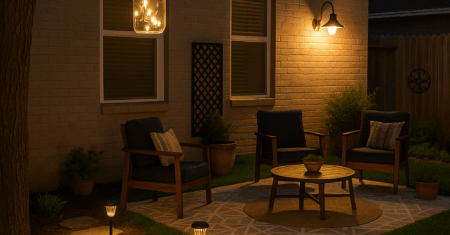
0 Comments